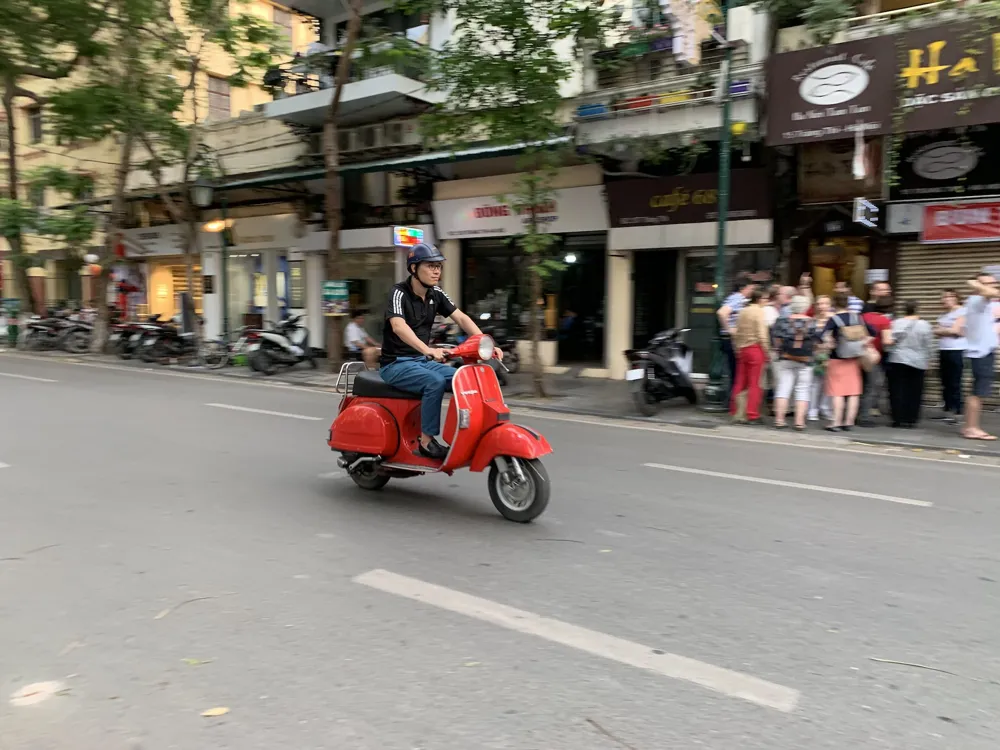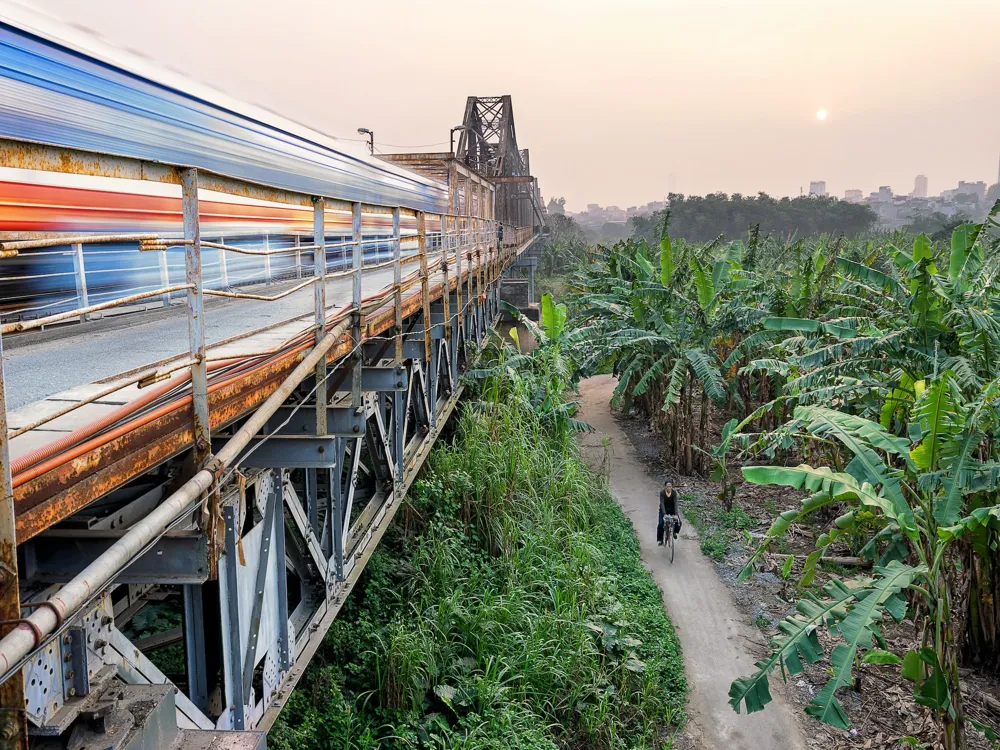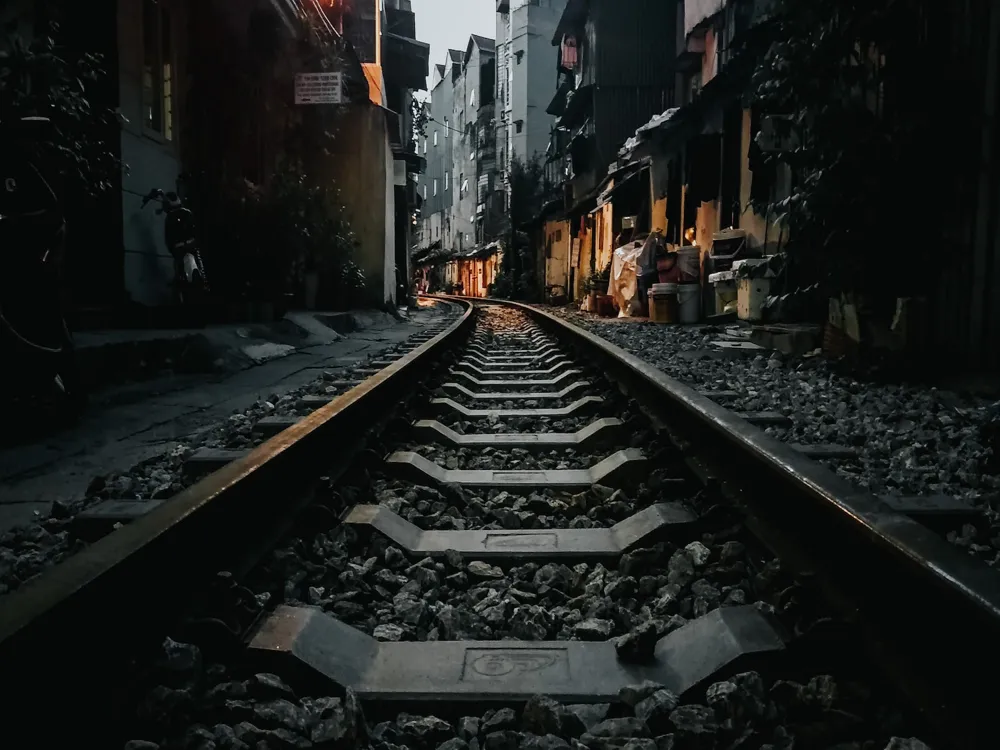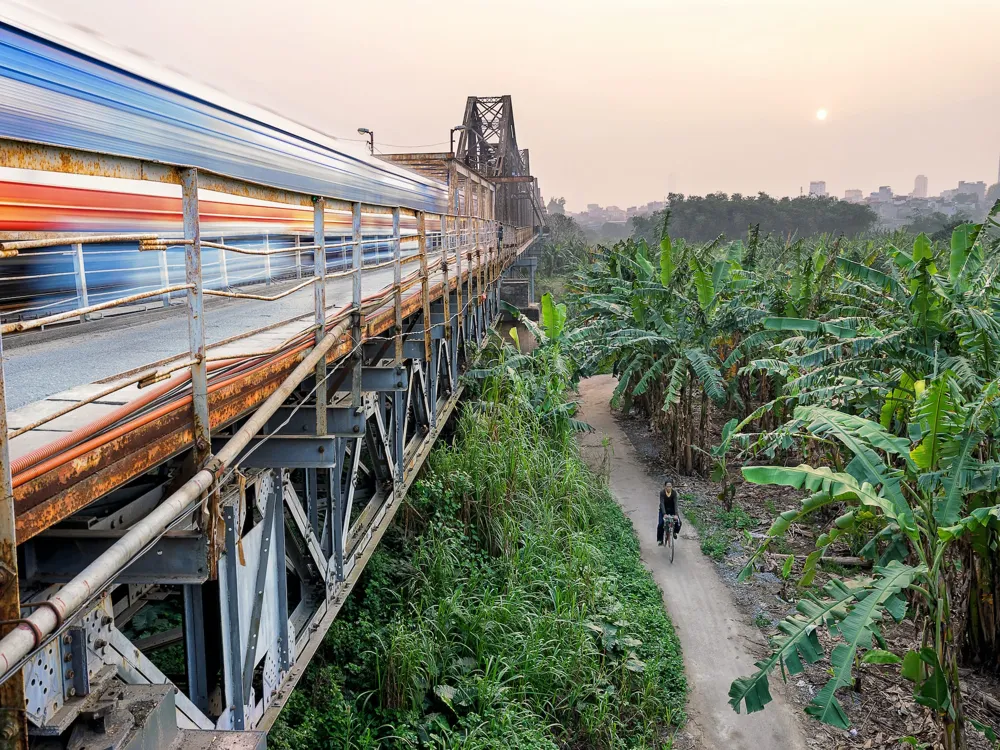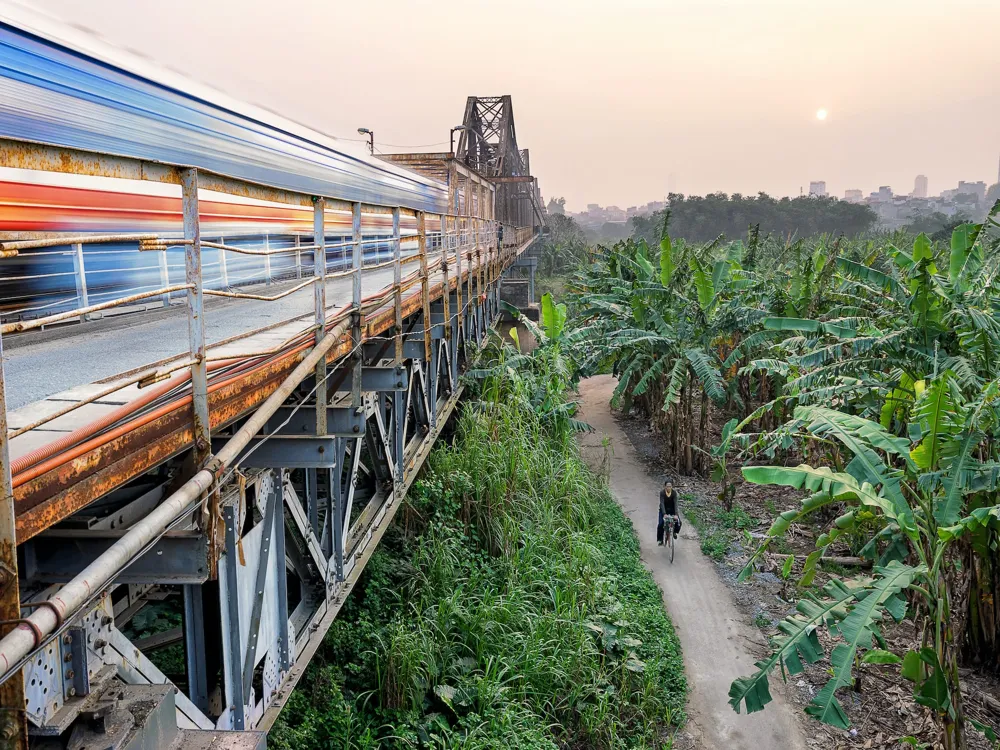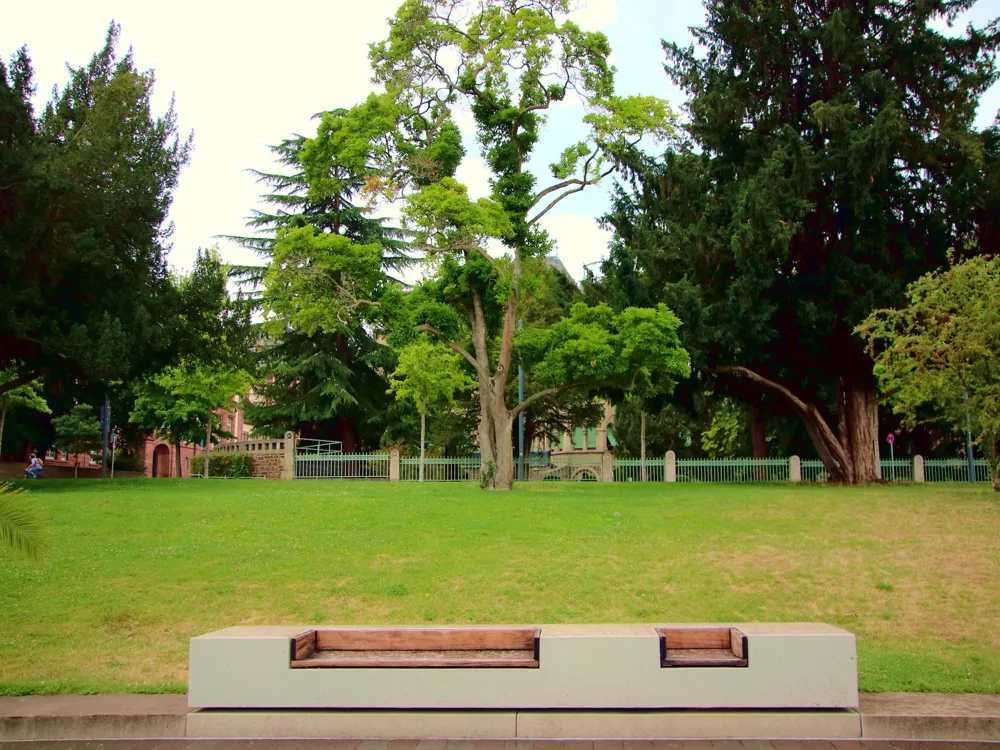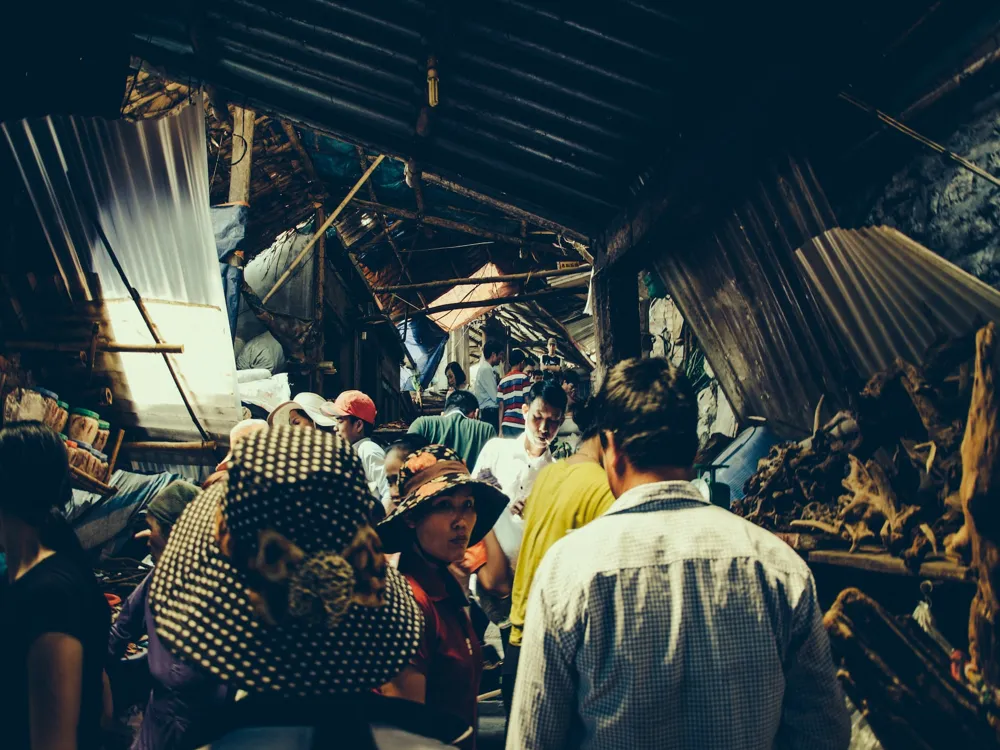Hanoi, the capital city of Vietnam, is a fascinating blend of East and West, combining traditional Sino-Vietnamese motifs with French flair. It's a city where the past coexists with the present; ancient temples sit alongside bustling modern streets. Hanoi's heart is its Old Quarter, a maze of streets dating back to the 13th century, each named after the goods once traded there. Amidst the chaos of scooters and street vendors, you'll find serene lakes, colonial architecture, and vibrant markets. The city's history is long and complex, with periods of both Chinese and French occupation. It's a city that has endured and flourished, offering a rich tapestry of experiences to any visitor.
Beyond the Old Quarter, Hanoi expands into a city of wide boulevards and grand buildings, many remnants of French colonial rule. The city has a thriving arts scene, with numerous galleries and theatres showcasing both traditional and contemporary Vietnamese art. One can't ignore the culinary landscape of Hanoi, which is a tapestry of fragrant pho, fresh spring rolls, and street food stalls that bring the city's sidewalks to life. The city's lakes, including the iconic Hoan Kiem Lake, offer tranquil retreats from the urban bustle. Hanoi's museums, such as the Vietnam Museum of Ethnology and the Hoa Lo Prison Museum, provide deep insights into the rich tapestry of Vietnamese culture and history.
Hanoi's architecture is a complex layering of eras and styles, reflecting its historical and cultural evolution. The city's architectural heritage is primarily influenced by Chinese and French colonial periods, interspersed with Vietnamese traditional designs. The Old Quarter represents the heart of traditional Vietnamese architecture, with its tube houses and narrow streets. These multi-story buildings are a testament to the adaptation of the local architecture to space constraints, each floor having a different function - the bottom for commercial activities and the upper floors for living.
The French colonial period left a significant imprint on Hanoi's architecture. This era brought to the city a touch of European elegance, evident in its wide boulevards, grand state buildings, and villas. The Hanoi Opera House and the Presidential Palace are prime examples of this style, showcasing the neoclassical design with Greek columns, shuttered windows, and wrought-iron balconies. Alongside these, numerous pagodas and temples showcase the indigenous architecture of Vietnam. The One Pillar Pagoda, for example, is a historic Buddhist temple with a unique lotus-shaped design, exemplifying the traditional Vietnamese architectural style.
When planning a trip to Hanoi, consider the weather. The city experiences a hot, wet season and a cool, dry season. The best time to visit is from October to April when the weather is more temperate and the rainfall is lower. It's also important to be aware of Vietnamese holidays, as some places might be closed or extremely crowded during these times.
Getting around Hanoi can be an adventure. The most common mode of transport is by scooter or motorbike, but for those unfamiliar with the chaotic traffic, it's safer to use taxis or ride-hailing apps like Grab. Walking is a great way to explore the Old Quarter, but be aware of your surroundings as sidewalks can be crowded and uneven.
When visiting temples or pagodas, dress conservatively and remove your shoes before entering. It's also respectful to ask for permission before taking photographs of people, especially in rural areas. Bargaining is common in markets, but do it respectfully and with a smile.
Hanoi's street food is a must-try. Popular dishes include Pho (noodle soup), Banh Mi (Vietnamese sandwich), and various types of spring rolls. However, be cautious of hygiene when eating street food. Look for busy stalls with a high turnover of customers, as this often indicates fresh, safe-to-eat food.
Hanoi is well-connected by air, with the Noi Bai International Airport serving as the main gateway. It's located about 35 kilometers from the city center, with taxis, buses, and private transfers available for the journey into the city. For those traveling within Vietnam or from neighboring countries, there are also train and bus options. The train journey offers a scenic route, especially if you're coming from the south of Vietnam.
Overview of Hanoi
Architecture of Hanoi
Tips When Visiting Hanoi
Planning Your Visit
Navigating the City
Cultural Etiquette
Culinary Experiences
How To Reach Hanoi
Quan Su Pagoda
Hanoi
₹ 15,260 onwards
View hanoi Packages
Hanoi Travel Packages
View All Packages For Hanoi
Top Hotel Collections for Hanoi

Private Pool

Luxury Hotels

5-Star Hotels

Pet Friendly
Top Hotels Near Hanoi
Other Top Ranking Places In Hanoi
View All Places To Visit In hanoi
View hanoi Packages
Hanoi Travel Packages
View All Packages For Hanoi
Top Hotel Collections for Hanoi

Private Pool

Luxury Hotels

5-Star Hotels

Pet Friendly







